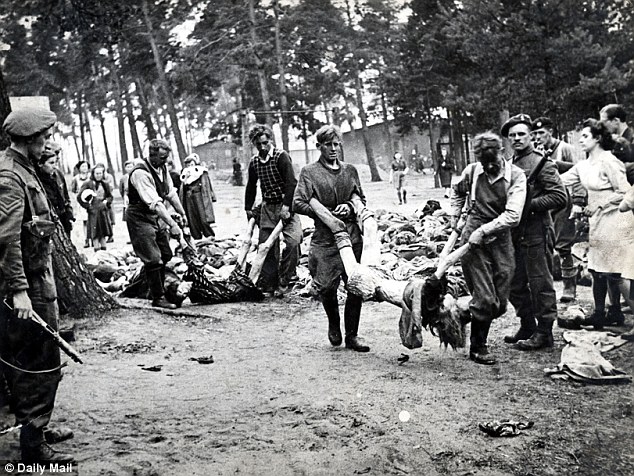The WWII prison found by Lieutenant John Randall appeared at first to be like any other old building, with large gates of iron that caused it to appear as if the pathway led up to a mansion. The SAS officer thought the site to be interesting, and wanted to investigate further. At only 25 years of age, and with only one man accompanying him, Randall approached the site from the front. He quickly discovered that he was at a WWII prison, yet the Nazis at the front oddly enough did not stop him as he spoke to the naked and dying prisoners there.
The prisoners were eager to seek help, and Randall was eager to offer it to them. Some of the prisoners had been interred at other such sites before, at least one of them having come there from Auschwitz. What Randall discovered was a WWII prison built on companionship; the survivors had to stick together, and even the massive pile of dead bodies he found was filled with corpses of men and women who held each other until the very moment of death.
Randall was the first soldier of the Allied powers to infiltrate the Bergan-Belsen camp during WWII, but he would not be the last. He sensed the urgency in the frailty of the prisoners’ figures; when he arrived, only a sixth of the population was deceased, but it did not seem as if that number would stay so low for long. The SAS was given a tour of the prison, and Randall left with the goal of coming back to save them, the Mail Online reports.
The leaders of the prison were quickly arrested, and the SAS began about the task of liberating the camp. It is now nearly 70 years since that day, but Randall can still remember the smell of the camp, the disgust of the journalists invited there, and the immensity of the task their medical officers had before them. The camp at Belsen was what alerted many people during WWII as to just how out of hand the Holocaust had gotten.
The camp was only one WWII prison out of many, but it still stuck in the eyes of the public as one of the worst examples of human indecency at the time. In fact, upon liberating the camp, one of the first tasks of the SAS was to have the Nazis remove bodies from the mass burial pits so that they could be buried more properly. Randall’s book, The Last Gentleman of the SAS, goes into more detail about the WWII prison and his doings there.
